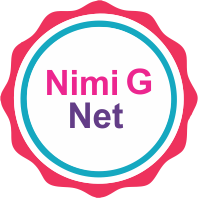Are you searching for the UGC NET Prakrit Syllabus 2023 PDF Download? Look no further, as we have compiled all the important details and tips to help you prepare for the exam.
The UGC NET Prakrit exam is conducted by the National Testing Agency (NTA) for candidates who wish to pursue a career in the field of Prakrit. The exam assesses the candidates’ knowledge in the subject and tests their eligibility for lectureship and research fellowships.
If you are planning to appear for the UGC NET Prakrit 2023 exam, it is important to have a thorough understanding of the syllabus and exam pattern. In this article, we have compiled all the important information you need to know about the UGC NET Prakrit Syllabus 2023 PDF Download
UGC NET Prakrit Exam Pattern 2023:
The UGC NET Prakrit exam consists of two papers – Paper 1 and Paper 2. Both papers are conducted on the same day, and the duration of each paper is 3 hours. The exam is conducted online, and each question carries 2 marks. There is no negative marking for incorrect answers.
The UGC NET Prakrit Exam consists of two papers: Paper 1 and Paper 2.
Paper 1:
- Duration: 3 hours
- Number of questions: 50
- Total marks: 100
- Type of questions: Multiple Choice Questions (MCQs) based on general aptitude, teaching and research aptitude, and current affairs.
Paper 2:
- Duration: 3 hours
- Number of questions: 100
- Total marks: 200
- Type of questions: MCQs based on Prakrit subjects.
Both papers are conducted in a single session with no break in between. The candidates are required to appear for both papers to be considered for the selection process.
It’s important to note that there is no negative marking for incorrect answers in UGC NET Prakrit Exam.
UGC NET Prakrit Syllabus 2023: Download PDF
The UGC NET Prakrit syllabus is divided into two parts – Paper 1 and Paper 2. Here’s a detailed syllabus for both papers.
Paper 1 Syllabus:
Teaching Aptitude:
- Teaching: Nature, objectives, characteristics, and basic requirements.
- Learner’s characteristics: Characteristics of adolescent and adult learners, and individual differences.
- Methods of teaching: Teacher-centered vs. learner-centered methods; Off-line vs. online methods.
- Evaluation systems: Elements and types of evaluation, evaluation in higher education, and grading system.
Research Aptitude:
- Research: Meaning, types, and characteristics.
- Steps of research.
- Methods of research.
- Research Ethics.
Reading Comprehension:
- Comprehension passages.
Communication:
- Communication: Nature, characteristics, types, barriers, and effective communication.
- Verbal and non-verbal communication.
- Classroom communication.
Logical Reasoning:
- Understanding the structure of arguments.
- Evaluating and distinguishing deductive and inductive reasoning.
- Verbal analogies.
Data Interpretation:
- Sources, acquisition, and interpretation of data.
- Quantitative and qualitative data.
- Graphical representation and mapping of data.
Paper 2 Syllabus:
Nta Ugc Net Prakrit Syllabus 2023 in English
Unit – I: History of the Prakrit Language: Origin and Development
1. Elements of the Prakrit language in Vedic literature 2. Earliest source of Prakrit 3. Development of the Prakrit language:
Primary Prakrit –
1) Inscriptional Prakrit, Niya Prakrit, Prakrit Dhammapada 2) General introduction to the language of the Aṅga Canonical texts 3) General introduction to the language of the texts – Kasāyapāhuḍa,
Ṣaṭkhaṇḍāgama and the texts of Kundakunda Secondary Prakrit –
1) Language of the Upāṅga canonical texts and Mūlasūtras : Aupapātika,
Rājapraśnīya, Daśavaikālika, Uttarādhyayana 2) General introduction to the language of the Mūlācāra, Bhagavatī Ārādhanā and
Tiloyapaṇṇatti 3) General introduction to the language of Gāthāsaptasatī, Paümacariyaṃ and
Vasudevahiṇḍī Tertiary Prakrit:
1) Commentary literature of the Canons : general introduction to the language of the Dhavalā and Jayadhavalā, sukhabodhā, commentary of Śīlāṅka on Sūtrakṛtāṅga 2) General introduction to the Setubandha, Gaüḍavaho, Līlāvaikahā and Prakrit
texts of Haribhadrasūri, Kuvalayamālākahā 3) Origin of the Apabhraṃśa language: Study of the works of Joindu, Svayambhū and Puṣpadanta & the Apabhraṃśa verses cited by Hemacandra in his Prakrit grammar.
4. Contribution of Prakrit to the development of modern Indian languages: Hindi
and other regional languages
Unit – II: Origin and characteristic features of different Prakrits
1. Mahārāṣṭrī 2. Śaurasenī 3. Ardhamāgadhī 4. Māgadhī 5. Paiśācī 6. Apabhraṃśa
Unit – III: Prakrit Canons and Commentry literature
1. History of Ardhamāgadhī and Śaurasenī canonical literature 2. History of commentary literature of the Prakrit canons 3. General introduction to the Samaṇasuttaṃ
Unit – IV: History of Prakrit Kāvya literature
1. Mahākāvya 2. Khanḍakāvya 3. Caritakāvya 4. Kathākāvya 5. Campūkāvya 6. Muktakakāvya
Unit – V: Prakrit in the ancient dramatic literature and Saṭṭaka literature
1. Prakrits in the dramas of Aśvaghoṣa and Bhāsa 2. Prakrits in the Mṛcchakaṭika, Mudrārākṣasa and in the dramas of Kālidāsa 3. Characteristic features of the Saṭṭaka literature
Unit – VI: Prakrit Inscriptional literature
1. Study of the 14 Rock-edicts of the Girnar version of Emperor Aśoka 2. Study of the Hāthīgumphā Inscription of Emperor Khāravela 3. Study of the Ghaṭiyāla Inscription of Kakkuka
Unit – VII: Prakrit Scientific literature
1. Rhetorics 2. Kośa 3. Some important Prakrit texts on Astrology and Mathematics 4. Prakrit grammarians and grammatical treatises 5. Metrics 6. Features with examples of some of the metres in Prakrit and Apabhraṃśa
a. Prakrit Metres – gahā, patthā, viulā, uggāhā, gāhū, siṃhiṇī, gāhiṇī, khaṃdhaa b. Apabhraṃśa Metres – duvai, kaḍavaa, ghattā, pajjhaḍiā, helā, caüpāiyā
-2-
Unit – VIII: Prakrit Grammar and Prakrit Philology
1. Prakrit Grammar – General rules of the Noun, Adjective, Pronoun,Verb, Indeclinables,
Case, Case-endings, Sandhi and Samāsa 2. Prakrit Philology – Phonetic Changes – vowels and consonants, ya-śruti, anusvāra, anunāsika, visarga; Phonetic behaviors – Assimilation, Dissimilation, Anaptyxix, Metathesis, Elision, Āgama and etc.
Unit – IX: Study of the Original Prakrit Texts
1. Ācārāṅga (First śrutaskandha : Chapter I – satthapariṇṇā; Chapter II- logavijaya) 2. Uttarādhyayana (Chapter I – Viṇayasuyaṃ, Chapter IX – namipavajjā) 3. Daśavaikālika (Chapters – I, II, III and IV) 4. Pravacanasāra of Kundakunda (Chapter I – jñādhikāra) 5. Sammaisuttaṃ of Siddhasena (Full text) 6. Dravyasaṃgraha of Nemicandra (Full text) 7. Bhagavatī Ārādhanā of Śivārya (verses 1 – 72) 8. Vasunandī-śrāvakācāra (verses 1 – 50 and the verses based on seven types of addictions
60 – 87 and 101 – 111)
Unit – X: Study of the Original Prakrit Kāvya literature
1. Mṛcchakaṭika of Śūdraka – only Prakrit portions (Chapters 1,2 and 6) 2. Setubandha of Pravarasena – Chapter I 3. Vajjālaggaṃ of Jayavallabha – First eight vajjās : soyāra, gāhā, kavva, sajjaṇa, dujjaṇa,
mitta, neha, nīivajjā 4. Gāhāsattasaī of Hāla – First śataka : verses 1 – 50 5. Samarāiccakahā – Chapter I 6. Kuvalayamālākahā Uddyotansūri – paragraphs 1-12 7. Karpūramañjarī of Rājaśekhara (Full) 8. Paümacariu of Svayambhū – Chapters 21 and 22 9. Nāyakumāracariu of Puṣpadanta – Chapter I 10. General introduction to the modern Prakrit literature
1) Rayaṇavālakahā 2) Bhāvaṇāsāro 3) Virāgasetu 4) Titthayara-bhāvaṇā
Paper 2 Syllabus Download Pdf:
Ugc Net Prakrit Syllabus 2023 in PDF
Preparation Tips for UGC NET Prakrit Exam 2023:
Here are some tips for preparing for the UGC NET Prakrit exam 2023:
- Understand the syllabus and exam pattern thoroughly.
- Make a study plan
- Refer to standard textbooks and study materials recommended for the exam.
- Practice previous year question papers and mock tests.
- Focus on time management and accuracy while attempting the questions.
- Take regular breaks and maintain a healthy lifestyle to avoid burnout.
- Join coaching classes or online courses if necessary.
- Stay updated with current affairs related to the Prakrit field.
Important Points:
- The UGC NET Prakrit exam is conducted by NTA for candidates who wish to pursue a career in Prakrit.
- The exam assesses the candidates’ knowledge in the subject and tests their eligibility for lectureship and research fellowships.
- The exam pattern of UGC NET Prakrit 2023 includes multiple-choice questions and is conducted in online mode.
- The marking scheme of the exam is +2 for a correct answer and no negative marking for incorrect answers.
- The duration of the exam is 3 hours, and the number of questions is 150.
- The UGC NET Prakrit Syllabus 2023 PDF Download is an important document that provides a detailed outline of the topics that will be covered in the exam.
- To download the syllabus, candidates can visit the official website of NTA and click on the link provided.
- The syllabus is available in PDF format and can be downloaded for free.
- The syllabus is divided into nine units, each covering a specific topic related to Prakrit.
- To prepare for the exam, candidates must understand the syllabus, make a study plan, practice previous year question papers, join a coaching institute, take mock tests, and revise regularly.
FAQs:
- Is there any negative marking in the UGC NET Prakrit exam 2023? Ans: No, there is no negative marking for incorrect answers.
- Can I download the UGC NET Prakrit Syllabus 2023 PDF from the official website? Ans: Yes, the syllabus is available for download on the official website of NTA.
- What is the duration of the UGC NET Prakrit exam 2023? Ans: The duration of each paper is 3 hours.
Also Check:
Conclusion:
In conclusion, the UGC NET Prakrit exam 2023 is a crucial opportunity for aspirants who want to pursue a career in the teaching or research field. To crack the exam, it’s essential to have a clear understanding of the syllabus, exam pattern, and prepare accordingly. With a comprehensive understanding of the UGC NET Prakrit Syllabus 2023 PDF download and proper preparation, you can clear the exam with flying colors.





